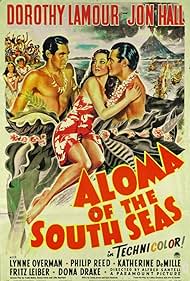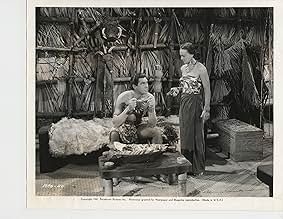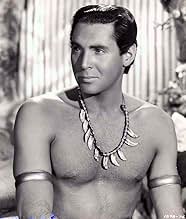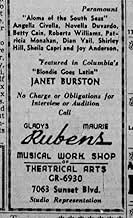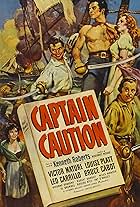A young South Seas native boy is sent to the U.S. for his education, but he returns to his island after his father dies to try to stop a revolution.A young South Seas native boy is sent to the U.S. for his education, but he returns to his island after his father dies to try to stop a revolution.A young South Seas native boy is sent to the U.S. for his education, but he returns to his island after his father dies to try to stop a revolution.
- Nominated for 2 Oscars
- 2 nominations total
Phillip Reed
- Revo
- (as Philip Reed)
Katherine DeMille
- Kari
- (as Katherine deMille)
Norma Gene Nelson
- Aloma as a Child
- (as Norma Jean Nelson)
William Roy
- Revo as a Child
- (as Billy Roy)
Fred Aldrich
- Native
- (uncredited)
Zita Baca
- Hand Maiden
- (uncredited)
John Bagni
- Native
- (uncredited)
Storyline
Did you know
- TriviaThe plot of the original 1926 version involves a man who returns home after the war to find his sweetheart has married someone else. He travels to the South Seas where he meets Aloma and falls in love with her. Then she has to return the man she loves to his sweetheart when she comes for him.
- ConnectionsFeatured in Road to Bali (1952)
- SoundtracksTHE WHITE BLOSSOMS OF TAH-NI
Lyrics by Frank Loesser
Music by Friedrich Hollaender (as Frederick Hollander)
Performed by Dorothy Lamour
Featured review
ALOMA OF THE SOUTH SEAS is typical of a series of pictures made by Paramount Studios during the late '30s and early '40s, set on some far-off tropical island paradise with a sarong-clad Dorothy Lamour. While these features may have wanted for sophistication and better production values, box office returns clearly indicated that American audiences, weary of a debilitating depression and a demanding war effort, were more than willing to buy tickets to a proxy Polynesia for an hour and a half's escape from reality.
Escape from reality is right, because these movies were as far removed from reality as the Oort Cloud is from the Earth. But they were popular enough to make the unpretentious Miss Lamour one of the most bankable stars in Hollywood at the time. In fact, she is the main reason I purchased a copy of this film from an online source, though more for its historical value than for any erudition one might expect. As a movie collector, I wanted to have at least one Dorothy Lamour sarong picture in which she was not accompanied by Crosby and Hope and this - THE HURRICANE notwithstanding - is the one I liked best.
Not that it is a good movie. It isn't but, to be enjoyed at all, it must be viewed within the context of its time. The plot is almost non-existent. It's the old eternal triangle in which two erstwhile boyhood friends Tanoa (Jon Hall) and Revo (Philip Reed) vie for the hand of Aloma (Lamour). That's it! There is a faint hint of some kind of island revolt but it never materializes, so the only question is who will be left to embrace Aloma at the fadeout. Incredibly, the situation is resolved not through the efforts or ingenuity of any of the principals, but by a convenient geological cataclysm: a spectacular volcanic eruption that's actually worth waiting for (and explains my overly generous rating of 8).
Dorothy Lamour does well enough in her lightweight role as the island maiden, but Jon Hall is too beefy to pass for the virile Polynesian native chieftain in a skimpy wrap-around. He is also betrayed by the script. As a leader of his people who had studied in America (including Harvard, of all places) he has absolutely nothing to do except moon over Miss Lamour (Nice work, if you can get it!). As for the islanders themselves, they come out in droves for the ritualistic dances but, at all other times, are noticeably absent.
Yet, even left as is, ALOMA could have benefited immeasurably from actual outdoor locations, as did the silent 1926 version which was shot in Puerto Rico and Bermuda. By confining filming to a sound stage, Paramount left us with a claustrophobic effect that looks more like the interior of a lush greenhouse than sultry island.
In her memoir, "My Side of the Road," Dorothy Lamour recalled, with some amusement, a harrowing experience while filming ALOMA. "During the volcanic explosion, I was supposed to swing across a gorge from one ledge to another but I didn't push off hard enough and was short of my target. Then, as I swung back, I couldn't reach the other ledge either. The crew urged me to let go the vine and jump but it looked like too far a drop so I clung on for dear life. As I struggled to stay on, I could feel my sarong slowly unravel until it finally slipped off. Everyone was laughing but I hung on until I was rescued." The scene was reshot with Lamour clinging to Jon Hall.
ALOMA OF THE SOUTH SEAS is a movie that can be enjoyed, but only if viewed as a diversion; otherwise, it will seem antiquated and silly.
Escape from reality is right, because these movies were as far removed from reality as the Oort Cloud is from the Earth. But they were popular enough to make the unpretentious Miss Lamour one of the most bankable stars in Hollywood at the time. In fact, she is the main reason I purchased a copy of this film from an online source, though more for its historical value than for any erudition one might expect. As a movie collector, I wanted to have at least one Dorothy Lamour sarong picture in which she was not accompanied by Crosby and Hope and this - THE HURRICANE notwithstanding - is the one I liked best.
Not that it is a good movie. It isn't but, to be enjoyed at all, it must be viewed within the context of its time. The plot is almost non-existent. It's the old eternal triangle in which two erstwhile boyhood friends Tanoa (Jon Hall) and Revo (Philip Reed) vie for the hand of Aloma (Lamour). That's it! There is a faint hint of some kind of island revolt but it never materializes, so the only question is who will be left to embrace Aloma at the fadeout. Incredibly, the situation is resolved not through the efforts or ingenuity of any of the principals, but by a convenient geological cataclysm: a spectacular volcanic eruption that's actually worth waiting for (and explains my overly generous rating of 8).
Dorothy Lamour does well enough in her lightweight role as the island maiden, but Jon Hall is too beefy to pass for the virile Polynesian native chieftain in a skimpy wrap-around. He is also betrayed by the script. As a leader of his people who had studied in America (including Harvard, of all places) he has absolutely nothing to do except moon over Miss Lamour (Nice work, if you can get it!). As for the islanders themselves, they come out in droves for the ritualistic dances but, at all other times, are noticeably absent.
Yet, even left as is, ALOMA could have benefited immeasurably from actual outdoor locations, as did the silent 1926 version which was shot in Puerto Rico and Bermuda. By confining filming to a sound stage, Paramount left us with a claustrophobic effect that looks more like the interior of a lush greenhouse than sultry island.
In her memoir, "My Side of the Road," Dorothy Lamour recalled, with some amusement, a harrowing experience while filming ALOMA. "During the volcanic explosion, I was supposed to swing across a gorge from one ledge to another but I didn't push off hard enough and was short of my target. Then, as I swung back, I couldn't reach the other ledge either. The crew urged me to let go the vine and jump but it looked like too far a drop so I clung on for dear life. As I struggled to stay on, I could feel my sarong slowly unravel until it finally slipped off. Everyone was laughing but I hung on until I was rescued." The scene was reshot with Lamour clinging to Jon Hall.
ALOMA OF THE SOUTH SEAS is a movie that can be enjoyed, but only if viewed as a diversion; otherwise, it will seem antiquated and silly.
- gpachovsky
- Sep 13, 2011
- Permalink
Details
- Release date
- Country of origin
- Language
- Also known as
- Aloma, die Tochter der Südsee
- Filming locations
- Production company
- See more company credits at IMDbPro
- Runtime1 hour 18 minutes
- Aspect ratio
- 1.37 : 1
Contribute to this page
Suggest an edit or add missing content

Top Gap
By what name was Aloma of the South Seas (1941) officially released in India in English?
Answer